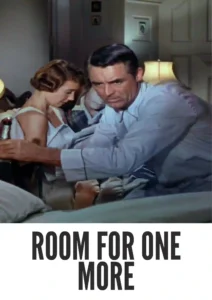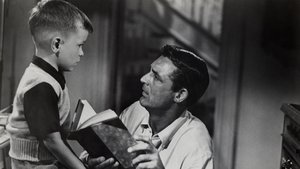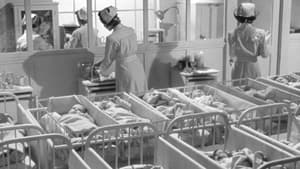Video Sources 0 Views
- Watch trailer
- Room for One More 1952 Colorized


Synopsis
Table of Contents
Toggle
Step into the delightful world of 1950s family life with Room for One More, a heartwarming family comedy from 1952, now beautifully colorized to bring its charm to a new generation. Starring the legendary Cary Grant and the delightful Betsy Drake, this film, directed by Norman Taurog, offers a touching and humorous look at the challenges and joys of a growing family through adoption. Perfect for family movie nights and fans of classic Hollywood, this HD download is a feel-good experience that celebrates the power of love and acceptance.
Room for One More tells the story of George (Cary Grant) and Anna Rose (Betsy Drake), a loving couple who already have three children but find their lives delightfully upended when they decide to take in orphaned children. Their journey begins with Jane, a young girl with a troubled past, and continues as they open their home and hearts to more children in need.
As the Rose family expands, they face a series of comical and heartwarming challenges, from navigating the children’s individual needs to dealing with the reactions of their friends and neighbors. Through it all, George and Anna’s unwavering love and commitment to their growing family shine through. The film explores themes of compassion, acceptance, and the true meaning of family. Ultimately, Room for One More is a feel-good movie that reminds us of the importance of opening our hearts to those who need it most, making it a timeless classic for audiences of all ages.
The film boasts a stellar cast of actors who bring the Rose family to life:
-
Cary Grant as George Rose
-
Betsy Drake as Anna Perrott Rose
-
Lurene Tuttle as Miss Kenyon
-
Randy Stuart as Mrs. Foreman
-
George Winslow as Arnold
Room for One More falls into the genre of family comedy, with elements of heartwarming drama and social commentary. Its lighthearted tone and relatable characters make it an enjoyable and uplifting film for the whole family.
Released in 1952, Room for One More reflects the post-World War II era’s emphasis on family values and optimism. The film’s themes of adoption and acceptance resonated with audiences during a time when many families were rebuilding their lives and communities. Room for One More offers a glimpse into the social attitudes and cultural norms of the 1950s, showcasing the importance of community and the belief in the power of love to overcome challenges. While styles and trends have evolved, the film’s core message of compassion and inclusivity remains relevant today.
This colorized version of Room for One More has been meticulously restored using state-of-the-art digital technology, enhancing the visual appeal while preserving the film’s original charm. The colorization process involved a detailed analysis of the original black and white footage, with careful attention paid to historical accuracy and aesthetic quality. Advanced algorithms were used to select appropriate colors for each scene, bringing the characters, costumes, and settings to vibrant life. This painstaking process ensures that the colorized version of Room for One More is a visually stunning experience that will captivate audiences. While opinions on colorizing classic films may vary, it serves as a bridge to new audiences, ensuring these stories continue to be cherished for years to come.
-
: Norman Taurog
-
: Jack Rose, Melville Shavelson
-
: the book “The Roses are Blue” by Anna Perrott Rose
-
: Robert Burks
-
: Alan Crosland Jr.
-
: Warner Bros.
-
: Warner Bros.
-
: 98 minutes
-
: MP4
-
: HD (1080p)
-
: Compatible with most devices, including smartphones, tablets, computers, and smart TVs.
Room for One More (1952) was well-received upon its release, praised for its heartwarming story, strong performances, and positive message. Critics lauded Cary Grant and Betsy Drake’s on-screen chemistry, as well as the film’s sensitive portrayal of adoption and family life. Over the years, Room for One More has continued to be appreciated for its timeless themes and feel-good appeal. As a beloved classic of the family comedy genre, Room for One More remains a cherished cinematic gem.
-
: What is Room for One More about?
-
A: Room for One More is a heartwarming comedy about a couple who decide to take in orphaned children, expanding their family in unexpected ways.
-
-
: Is Room for One More (1952) a well-known Cary Grant film?
-
A: While not as widely known as some of his other films, Room for One More is a beloved classic that showcases Cary Grant’s versatility as an actor.
-
-
: Is this version of Room for One More colorized?
-
A: Yes, this version has been professionally colorized to enhance the viewing experience.
-
-
: What makes Room for One More interesting for classic film fans?
-
A: Room for One More offers a charming glimpse into 1950s family life, with a heartwarming story and memorable performances.
-
-
: What is the download format?
-
A: The download format is MP4, which is compatible with most devices.
-
-
: What resolution is the download?
-
A: The resolution is HD (1080p), providing a high-quality viewing experience.
-
Watch Room for One More Today!













